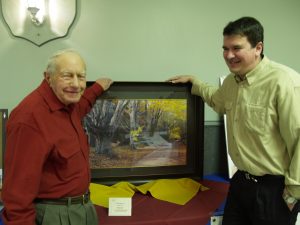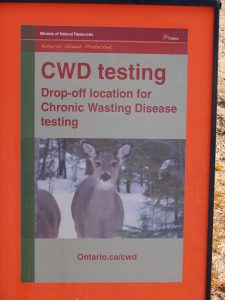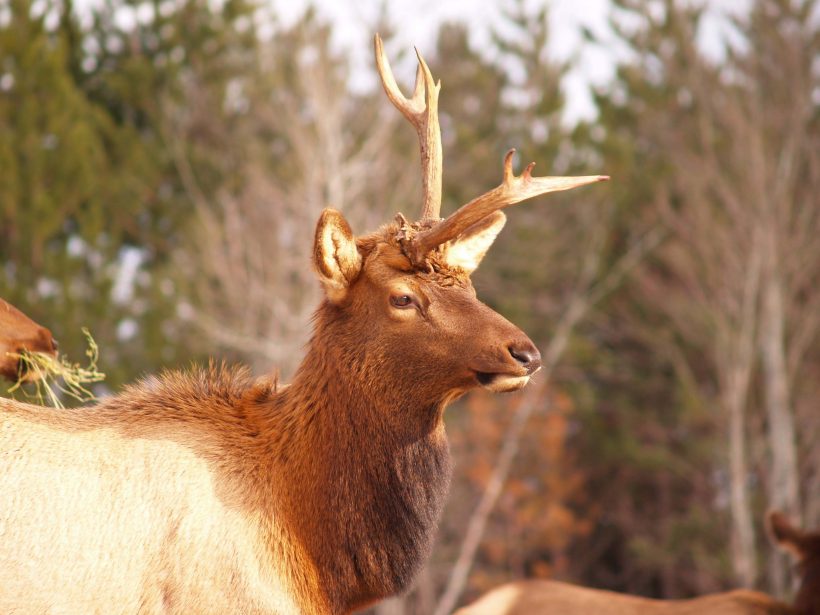The Next Chapter?
During the winter of 2001/02 the MNR studied the Chronic Wasting Disease (CWD) situation. The MNR commissioned the Cooperative Wildlife Disease Centre (CWDC) in Saskatoon to assess the risk of CWD transmission. The CWDC stated that there was a very low risk of importing CWD into Ontario through the shipment of elk from Elk Island National Park. The report suggested a conservative approach be taken until more could be learned about CWD, which had been discovered in game farmed deer and elk in Alberta. Subsequently the MNR decided to put any further shipments of elk to Ontario on hold pending a complete review of Ontario’s elk program. The program review was completed in 2003 and subsequently put a halt to any further elk shipments for re-introduction.
With the conclusion of transfer and implementation the ministry moved to the next step – management. Unfortunately, a cut in funding left the elk program in Ontario significantly dependable upon private groups comprised mainly of volunteers, such as the Quinte Elk Restoration Committee mentioned earlier in the book. Each of the four areas of re-introductions became quite reliant on such volunteers.
Compounding the situation was the withdrawal of the Rocky Mountain Elk Foundation (RMEF) from Canada. In December 2005 the RMEF announced that it would be closing the staff offices of RMEF Canada and relocating the administrative functions to Missoula, Montana. This was a business move to reduce expenses. After 17 years and a growing membership of 3000 with some 300 projects under its belt from British Columbia to Ontario RMEF was heading south. And so a number of RMEF employees such as Jason St. Michael, Regional Director for Ontario, were let go. Just before Christmas 2005, RMEFC announced that they would be shutting down the Canadian operations and effective January 1, 2006 employees in Canada would be laid off. With RMEFC no more and the Ontario government effectively cutting funds for elk research the program was left in a precarious position.
The situation was made for lemons and lemonade. With RMEFC exiting Canada the Quinte Elk Restoration Committee dug in their heels, eventually incorporated and became a charitable organization. As of 2007 had raised some $100,000 for elk research. When RMEFC was in Canada a large percentage of funds raised by the committee went to RMEFC. In its absence, the committee retained 100% of the funds for local dispersal as they saw the need arise. With GPS collars fetching $4500.00 and helicopters some $1500 per hour for monitoring flights it wasn’t difficult to find a worthy local cause.

South of the border down Kentucky and Tennessee way the wildlife agencies have or are about to raise valuable research funds from elk hunting. In Kentucky there were some 42,000 applicants looking for one of the 12 available elk tags. By 2004 41 tags were made available. “Modern day elk hunting started in 2001, five years after the start of an ambitious program to restore elk to the southeastern portion of the state,” said a news release. “With an estimated 4,500 animals, Kentucky has the largest elk herd east of the Mississippi.”
The State of Tennessee had planned for a tentative elk hunt in 2007, the first since the 1850s.The plan called for an elk permit to go to a nonprofit group to be auctioned off or raffled off. Monies raised would be for the elk restoration project. “It’s believed a permit to be the first person to legally hunt elk in Tennessee since the 1850s could be worth several thousand dollars, said a state news release. The Tennessee Wildlife Resources Commission voted to delay the hunt until 2009 in order to better study how permits for elk hunts are awarded in other states.
It doesn’t require a stretch of the imagination to realize what such a hunt could do for Ontario’s elk program.

